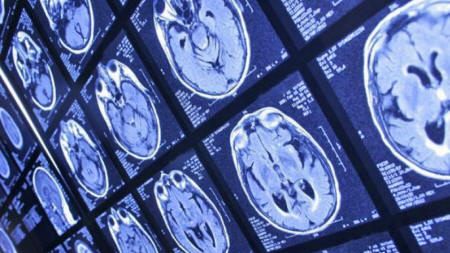|
|
|
from OccupyCorporatism Website
In the saga to explain the alleged mental disorder known as attention hyper-activity disorder (ADHD), psychiatrists at the University of Michigan (UM) Medical School Department of Psychiatry (MSDP) have used "highly advanced computer models" to access where ADHD is in the human brain.
Five years ago, Dr. Leon Eisenberg, child and social psychiatrist who passed away in 2009, was credited with being the scientific father of attention deficit hyperactivity disorder (ADHD) later admitted in his last interview that ADHD is a,
Eisenberg clarified:
Since then psychiatrists have worked hard to prove the validity of ADHD in order to justify why dangerous pharmaceuticals are being prescribed to children.
The MSDP study uses computer models (which are easily manipulated) to,
To preserve a more than $8 billion annual industry profit margin, pharmaceutical corporations and psychiatrists have been causing "a national disaster of dangerous proportions" to ensure the future of their sales and make a return on the estimated $200 million a year spent on advertising.
Armed with function magnetic resonance imaging (fMRI) scanners, the psychiatrists looked at the brains of more than 750 children and teenagers to determine some sort of connection between ADHD and the electronic impulses seen firing throughout the brain.
The quest for ADHD is a lucrative one.
Back in June of this year, Shire, a research and development corporation that specializes in marketing,
...has been asked by the Food and Drug Administration (FDA) to conduct clinical trials of Vyvanse, a pharmaceutical drug marketed to children for the treatment for ADHD.
Because more than 10,000 toddlers age 2 or 3 are medicated for ADHD with Ritalin or Concerta; preschool-aged children have proven to be a prime target for pharmaceutical corporations.
Shire will begin clinical trials on pre-school aged children in 2015 because the company is,
Vyvanse is used to treat ADHD in children, while dangerous effects and potentials of the drug are brushed aside.
This pharmaceutical can cause "heart and blood pressure problems" if it is "misused or abused" because it is an amphetamine.
Other effects of Vyvanse include:
This drug is highly addictive and users are known to become dependent on it.
Another study involving rfMRI that claims to have found ADHD was published by psychiatrists at the West China Hospital (WCH) Department of Radiology at Sichuan University (DRSU) asserts that previously unknown "brain anomalies" are assumed to be connected to ADHD.
The FDA, in their efforts to assist pharmaceutical corporations find ADHD, has approved a new testing system called Neuropsychiatric EEG-Based Assessment Aid (NEBA) System that measures electrical impulses that neurons give off within the brain to look for evidence of ADHD within a patient’s neural-net.
Because of the over-diagnosis of ADHD, researchers at for the Center for Research in Evidence-Based Practice at Bond University (CREP-BU) published a study that suggests doctors wait a minimum of 10 weeks before prescribing psychiatric treatment for ADHD.
The American Psychiatric Association’s Diagnostic and Statistical Manual of Mental Disorders (DSM) and the International Classification of Diseases (ICD) define ADHD and set parameters that doctors and parents need to adhere to preserve the functionality of the child.
Increased diagnosis of ADHD has risen to 73% between 2000-2011 which correlates to prescriptions for Ritalin and Vyvanse being written at exorbitant rates.
It is assumed by the psychiatric community that 2 and 5% of school-age children suffer from ADHD that is unchecked and untreated.
Over-diagnosis of ADHD could be fueled by studies such as one conducted by Pennsylvania University (Racial and Ethnic Disparities in ADHD Diagnosis From Kindergarten to Eighth Grade) which found children of minority groups go undiagnosed for attention deficit hyperactivity disorder (ADHD) which results in a lack of psychological treatment.
The researchers claim that from comparisons that Hispanic and Asian children were less likely to be diagnosed with ADHD; as well as African American children were 2/3rd less likely to be declared having this mental issue when those racial groups were compared with Caucasian children.
In fact, the data presented by these researchers stated that ADHD sufferers were increased by the following factors:
The study asserts that while "disparities can occur in both diagnosis and treatment" minority children who have ADHD and are not diagnosed will perform poorly in school and life and not receive the proper amount of,
|


